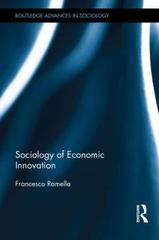Question
2. Use the following information to answer this question. If nominal GDP rises from $100 trillion to $120 trillion, while the GDP deflator rises from
2. Use the following information to answer this question. If nominal GDP rises from $100 trillion to $120 trillion, while the GDP deflator rises from 2.0 to 2.2, the percentage change in real GDP is approximately equal to A) -10%. B) 10%. C) 20%. D) 9.1%. E) 0%.
3. If C = 2000 + .9YD, what decrease in taxes must occur for equilibrium output to increase by 1000? A) 111 B) 100
C) 1000 D) 500
4. The money demand curve will shift to the left when which of the following occurs? A) a reduction in the interest rate B) an increase in the interest rate C) an open market sale of bonds by the central bank
D) an increase in income E) none of the above
7. A firm's value added equals A) its revenue minus all of its costs. B) its revenue minus its wages. C) its revenue minus its wages and profit. D) its revenue minus its cost of intermediate goods. E) none of the above
8. Which of the following is not an asset on a bank's balance sheet? A) reserves B) loans C) checkable deposits
D) all of the above E) none of the above
9. GDP in current dollars is equivalent to which of the following? A) real GDP B) GDP in terms of goods C) GDP in 2000 dollars
D) GDP in constant dollars E) none of the above
12. Suppose a one-year discount bond offers to pay $1000 in one year and currently has a 8% interest rate. Given this information, we know that the bond's price must be A) $1008.5 B) $925.9
C) $750 D) $108 E) none of the above
13. Disposable income equals A) income minus saving. B) income minus both saving and taxes. C) consumption minus taxes. D) the sum of consumption and saving. E) none of the above
14. Which of the following generally occurs when a central bank pursues expansionary monetary policy? A) the central bank purchases bonds and the interest rate increases. B) the central bank purchases bonds and the interest rate decreases.
C) the central bank sells bonds and the interest rate increases. D) the central bank sells bonds and the interest rate decreases.'
18. Suppose a one-year discount bond offers to pay $100 in one year and currently sells for $95. Given this information, we know that the interest rate on the bond is A) 11.1%. B) 10%.
C) 5.3%. D) 9.9%.
19. In a goods market model, we know that a reduction in c1 (where C = c0 + c1YD) will cause A) the ZZ line to become steeper and a given change in autonomous consumption (c0) to have a
smaller effect on output. B) the ZZ line to become steeper and a given change in autonomous consumption (c0) to have a larger effect on output. C) the ZZ line to become flatter and a given change in autonomous consumption (c0) to have a smaller effect on output. D) the ZZ line to become flatter and a given change in autonomous consumption (c0) to have a larger effect on output.
30. The IS curve represents A) the single level of output where the goods market is in equilibrium. B) the single level of output where financial markets are in equilibrium. C) the combinations of output and the interest rate where the money market is in equilibrium. D) the combinations of output and the interest rate where the goods market is in equilibrium. E) none of the above
31. We would expect which of the following to occur when the central bank pursues contractionary monetary policy? A) an increase in bond prices and an increase in the interest rate (i) B) a reduction in bond prices and an increase in i
C) an increase in bond prices and a reduction in i D) a reduction in bond prices and a reduction in i E) none of the above
32. Suppose the consumption equation is represented by the following: C = 250 + .75YD. Now assume government spending increases by 100 for the above economy. Given the above
information, we know that equilibrium output will increase by A) 200. B) 400. C) 800.
D) 1000. E) none of the above
33. When a liquidity trap situation exists, the most appropriate policy to increase output would be
A) a central bank sale of bonds.
B) an increase in government spending.
C) a central bank purchase of bonds.
D) none of the above
34. Which of the following represents total saving for an economy? A) the sum of private saving and fixed investment B) the sum of private saving and consumption C) the sum of taxes and government spending
D) the excess of taxes over government spending E) none of the above Answer: E
35. For this question, assume that individuals do not hold currency (i.e., c = 0). The money 6
multiplier is equal to A) 1. B) 1/(1 - c). C) .
D) 1/(1- ). E) 1/
Step by Step Solution
There are 3 Steps involved in it
Step: 1

Get Instant Access to Expert-Tailored Solutions
See step-by-step solutions with expert insights and AI powered tools for academic success
Step: 2

Step: 3

Ace Your Homework with AI
Get the answers you need in no time with our AI-driven, step-by-step assistance
Get Started


